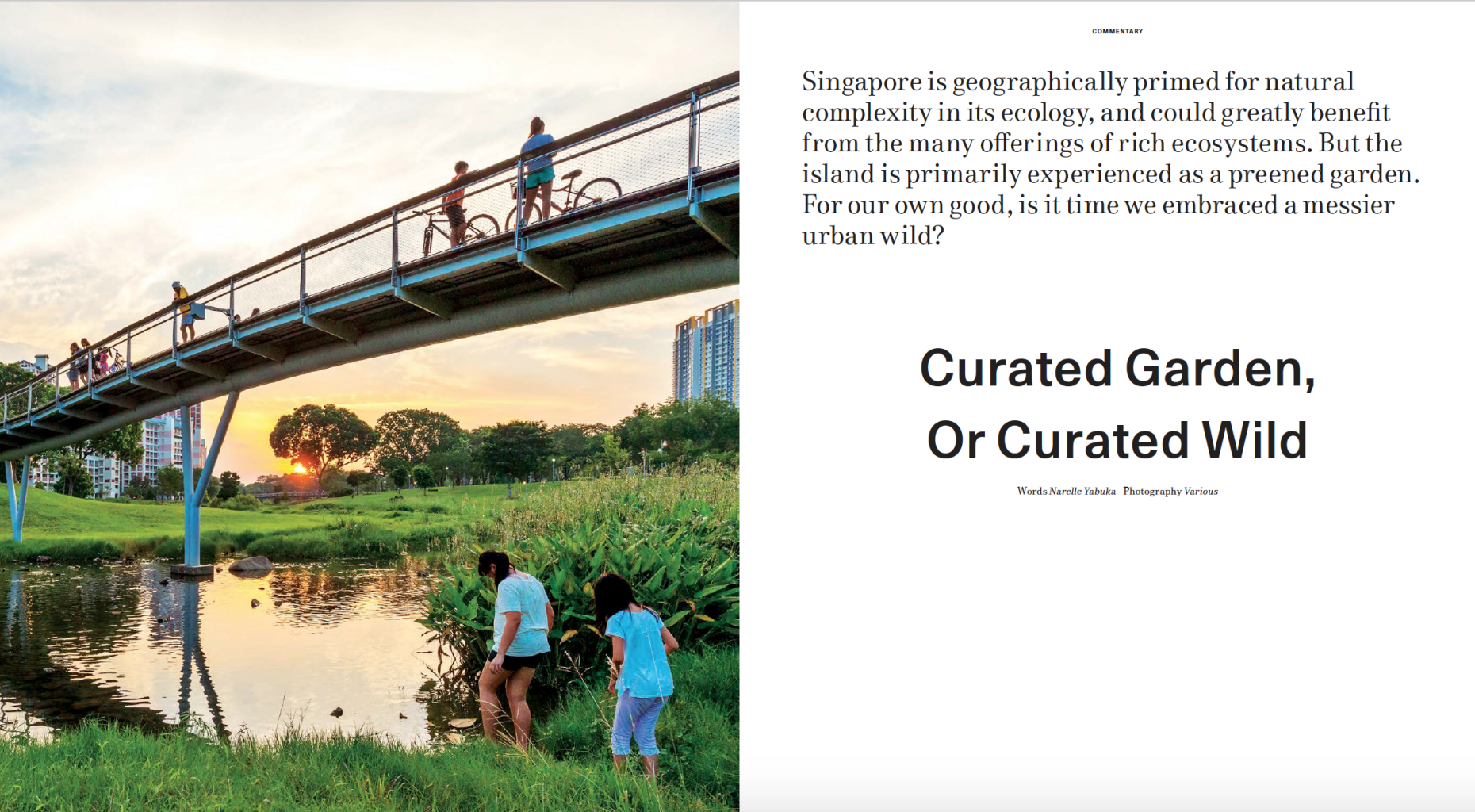Curated Garden or Curated Wild?
Urban landscape design is often considered static, but needs to be viewed more as the beginning of a long process. Dr Dan Richards advocates the ecosystem services design loop.

In an urban environment where most are accustomed to curated gardens, to what extent can we also curate nature? Moving from "Garden City" to" City in the Garden", Singapore is moving towards "City in Nature".
In an article in the 100th issue of architecture and design magazine, Cubes, experts provided insights into what it takes to reintroduce nature back into the city and why it is necessary to do so. The ecosystem services provided by vegetation and natural habitats – particularly by complex habitats – are recognised as critical for increasing the resilience of urbanscapes to the challenges of climate change.
"The complexity of natural vegetation provides the gold standard, but we can design managed vegetation to come close, through incorporating structural complexity, ” says Dr Dan Richards, principal investigator of the Natural Capital Singapore project at the Singapore-ETH Centre. Research in his previous project, Ecosystem Services in Urban Landscapes, has shown that in general, complex and unmanaged vegetation provides higher levels of most ecosystem services than heavily managed vegetation.
The reserach team has also developed a conceptual framework, known as the ‘Ecosystem Services Design Loop’, which will allow urban designers to assess the ecosystem service impacts of their designs, and then modify their designs for improved outcomes. This allows designs to be continuously tested for their environmental performance, using models, data and expert opinion, explains Dr Richards. In future, architects and planners may increasingly be required to justify their designs in terms of the contribution they make to the urban environment, including mitigating the urban heat island effect.
Prof. Thomas Schroepfer, principal investigator of Dense and Green Building Typologies research project at the Future Cities Laboratory, pointed out in his book Dense+Green Cities that "the city is a multi-dimensional ecosystem and “the idea that greenery in the urban environment is an amenity is increasingly seen as both reductive and false.” Rather, he observes, ecologically designed buildings and cities with green and blue networks can produce more liveable and sustainable urban environments.
Download Read the full article in Cubes here (PDF, 2.6 MB)